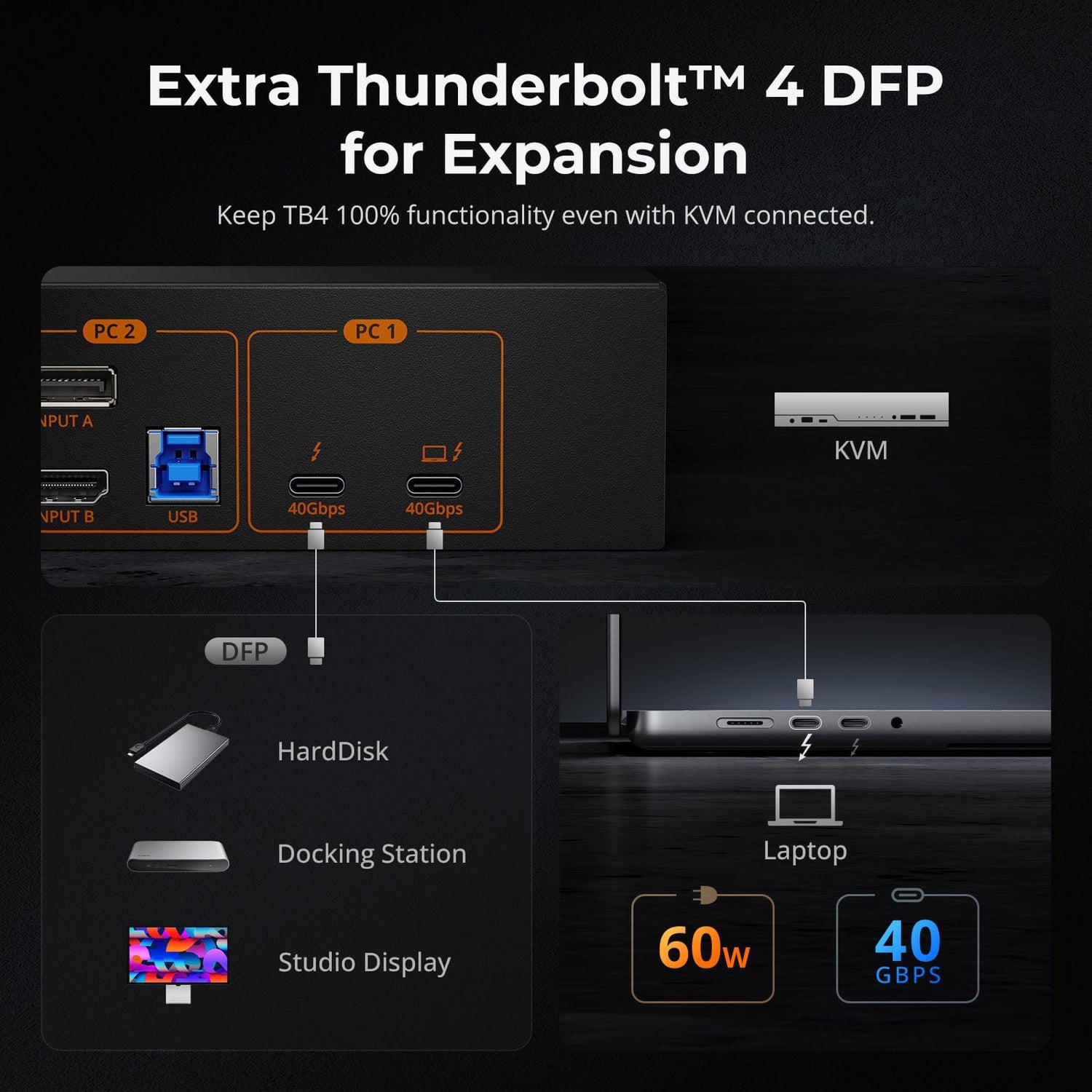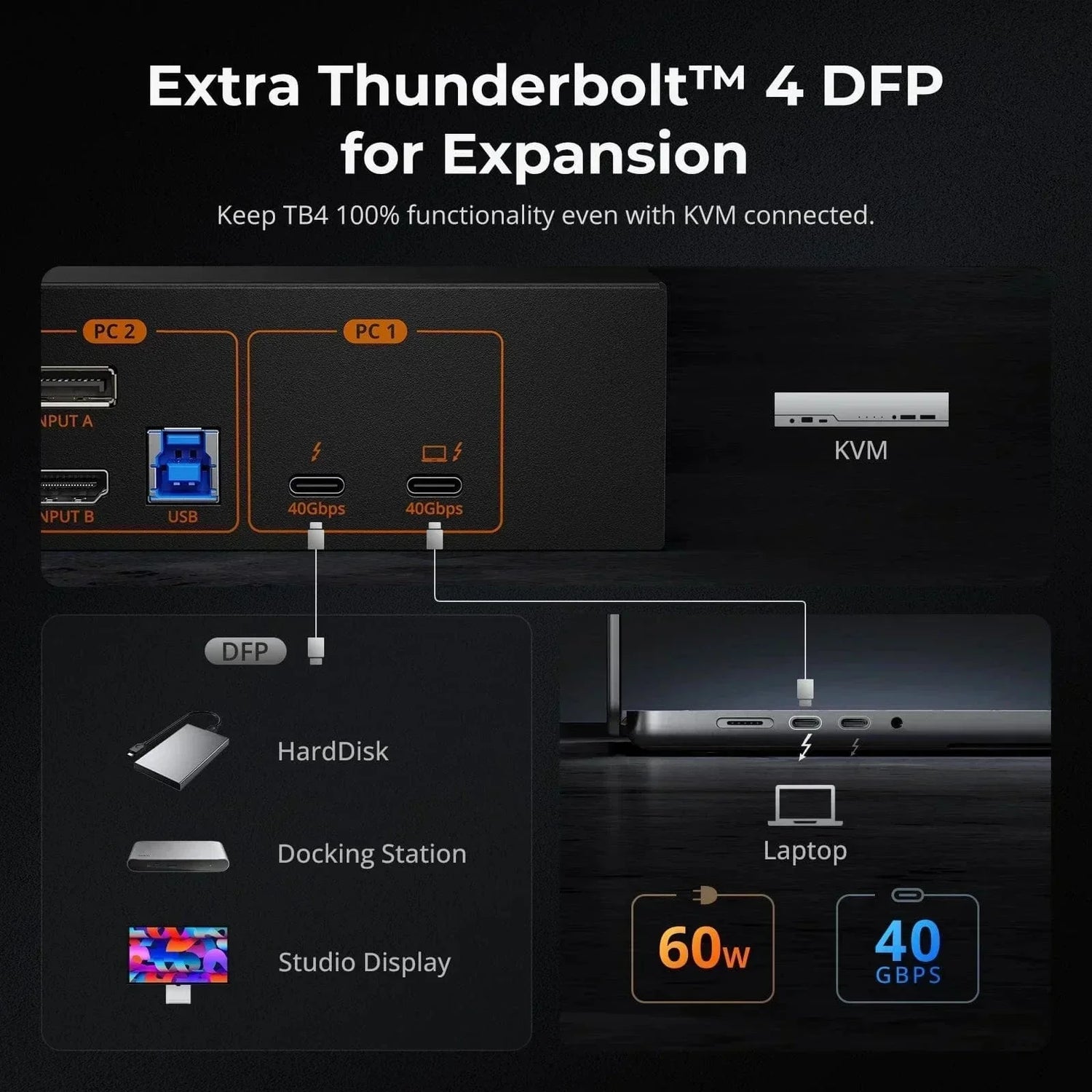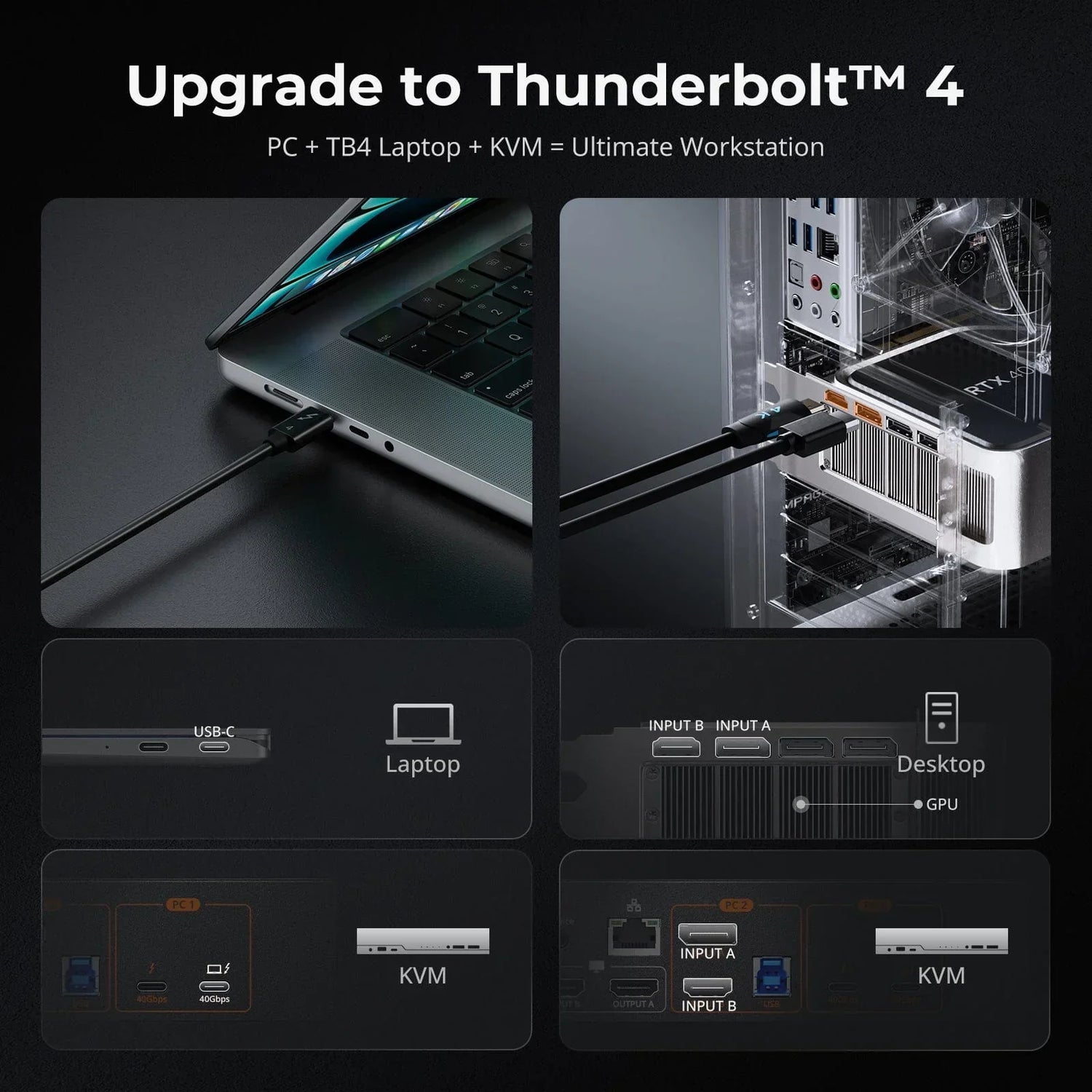The terms 4K and 8K refer to the resolution of an image, which is a measure of how many pixels are used to create the content on the screen. Picture quality is important when watching movies or TV shows, making 4K and 8K important terms. 4K and 8K TVs are the latest in television technology. So, what's the difference between them? This blog will dive into the main differences between 4K and 8K.
What is 4K?
4K resolution, also known as Ultra High Definition (UHD), is 3840 x 2160 pixels, which amounts to approximately 8.3 million pixels in total. The resolution is often indicated by an abbreviation that only tells its height, so with approximately 4000 pixels in width, 4K refers to the horizontal pixel number. 4K resolution provides four times as many pixels as 1080p (1920 x 1080 pixels), providing significantly enhanced detail and clarity.
What is 8K?
8K resolution, also known as Ultra High Definition 2 (UHD-2), is 7680 x 4320 pixels, which amounts to approximately 33.2 million pixels in total. Like 4K, the term 8K also refers to the horizontal pixel number with that being approximately 8,000 pixels. This resolution provides four times the pixel count of 4K, offering an even more incredibly detailed and sharp image quality suitable for large screens and close viewing distances.
*For more detailed information about 8K, you may be interested in What is 8K? Is It Worth It?
1080P vs. 4K vs. 8K
When it comes to enjoying visual content, the clearer the picture, the better. That's where 1080p, 4K, and 8K come in. They're like different levels of clarity. 1080p is standard, 4K is even clearer, and 8K is the clearest of them all. Let's take a closer look at what each one offers.
|
Comparison |
1080P |
4K |
8K |
|
Resolution |
1920x1080 Pixels |
3840x2160 Pixels |
7680x4320 Pixels |
|
Bandwidth |
5-10 Mbps |
15 Mbps to 25 Mbps or More |
50 Mbps to 100 Mbps |
|
Application |
TV Shows and Movies, Video Games on Consoles |
Streaming Content on Amazon Prime and Disney+, Competitive Games |
High-end TVs,Professional film production and editing |
|
Content Availability |
Widely Available |
Increasing Availability |
Limited Availability |
|
Commonly Used Term |
High Definition (HD) |
Ultra High Definition (UHD) |
8K Ultra HD, UHD-2, Super Hi-vision |
4K vs. 8K: Which One is Better?
- Resolution and Clarity
4K: 4K resolution refers to a display or content resolution with a horizontal pixel count of approximately 4000 pixels. The most common 4K resolution is 3840 pixels x 2160 lines (8.3 megapixels total), also known as Ultra High Definition (UHD). With four times the number of pixels as Full HD (1080p), 4K provides a significantly higher level of detail and clarity. This results in sharper images, more vibrant colors, and finer textures, especially noticeable on larger screens.
8K: 8K resolution is an even higher resolution standard with a horizontal pixel count of approximately 8000 pixels. The most common 8K resolution is 7680 pixels × 4320 lines (33.2 megapixels total). With four times the pixel density of 4K and sixteen times that of Full HD, 8K delivers unparalleled clarity and detail. It's especially beneficial for large-format displays, such as cinema screens and massive TVs.
- Content Availability
4K: Streaming platforms like Netflix, Amazon Prime Video, and Disney+ offer a growing selection of movies, TV shows, and original content in 4K resolution. Gaming consoles such as the PlayStation 5 and Xbox Series X support 4K gaming, providing access to visually stunning game titles.
8K: While 8K content is still limited compared to 4K, platforms like YouTube and Vimeo offer a small but growing library of videos in 8K resolution. High-end cameras and camcorders allow content creators to capture footage in 8K, catering to the demand for high-resolution content.
- Viewing Experience
4K: With four times the pixel density of 1080p, 4K delivers sharper details, richer colors, and smoother gradients. Viewers can appreciate finer textures and more lifelike images, especially on larger screens. The enhanced clarity of 4K makes it ideal for viewing high-definition content such as movies, sports, and documentaries, offering a more immersive and cinematic experience.
But the optimal viewing distance for comfort depends on various factors, including the type of content being watched, the viewing environment, and the viewer's physical condition. When watching a TV from distances beyond those specified, the pixels blend together, making it difficult to distinguish between 4K and 8K content.
8K: 8K resolution takes the viewing experience to the next level by offering four times the pixel density of 4K and sixteen times that of Full HD. With significantly more pixels, 8K delivers unparalleled clarity, allowing viewers to discern even finer details and textures. The increased resolution results in smoother curves, more precise color gradients, and a heightened sense of realism.
With an 8K TV, like with 4K, you'll see the sharpest details if you're sitting relatively close, around 1.5 times of the vertical screen size away. But just like with any TV, where you sit ultimately depends on what feels best for you. Some people like being close for that immersive feel, while others prefer a bit more distance for a wider view.
- Best-Use Scenarios
4K: 4K resolution is ideal for watching movies and TV shows, providing sharp, detailed visuals that enhance the viewing experience. It's also great for gaming, offering more immersive graphics, and is excellent for sports viewing, capturing fast-paced action clearly. Additionally, 4K is suitable for professional photography and video editing, as well as general web browsing and computer use, delivering high-quality detail and clarity.
8K: 8K resolution is perfect for gaming, delivering incredibly lifelike graphics, and for viewing documentaries and nature footage, providing unmatched detail and realism. It's highly beneficial for professional photography and video editing, offering superior precision and enhancing virtual reality (VR) content, making virtual environments more immersive and realistic.
- Display Technology
4K: 4K displays are widely available in various sizes and types, including televisions, monitors, projectors, and laptops, catering to different needs and budgets. Brands like LG, Samsung, Sony, and ASUS offer a range of 4K products across different price points.
8K: Leading manufacturers such as Samsung, LG, Sony, and TCL have introduced 8K televisions with advanced display technologies like QLED and OLED, providing users with the ultimate in visual clarity and immersion. However, 8K displays are currently more limited in availability and tend to come with a higher price tag.
TESmart 4K and 8K KVM Switch Recommendations
Introducing TESmart HKS402-P23 KVM switch with 4 USB 3.0 ports (including 1 USB-C), designed for a more efficient and streamlined workspace. Control up to four computers using one keyboard, mouse, and dual monitors. Enjoy stunning visuals with support for up to 3840x2160@60Hz (4:4:4) resolution, HDMI 2.0, and HDCP 2.2 compliance.
The KVM switch kit includes four KVM-to-PC cables, each with a USB cable and two HDMI cables, making setup simple. The integrated microphone and L/R audio output enhance your multimedia experience, while the new front panel buttons make it easy to switch monitor signals. Plus, two of the USB ports can charge your devices.
Switch between computers effortlessly using the front panel buttons, keyboard hotkeys, or the IR remote control. With EDID emulators in each input port, your PCs will always receive the correct information. Two display modes allow you to switch both monitors simultaneously or control each monitor individually. Enhance your productivity with our efficient and versatile KVM switch.
If you have need to level up your devices to 8K, TESmart HKS401-M23 8K KVM switch is the perfect solution, allowing you to connect up to four input sources and seamlessly switch to one output source. With support for resolutions up to 8K (4320p)@60Hz and backward compatibility with 4K (2160p)@60Hz/120Hz/144Hz, you can enjoy ultra-high-definition content without compromising on quality. The built-in ADI chip ensures stable performance and fast signal switching, making it ideal for both professional setups and gaming enthusiasts.
It also features Dynamic HDR, HDR10+, Dolby Vision, VRR, FVA, and ALLM to minimize screen tearing, stuttering, and input lag for a smoother gaming experience. Additionally, the built-in USB 3.0 hub enables sharing of peripherals like 4K webcams and game controllers between two PCs or consoles, with a front panel USB 3.0 port providing 7.5W charging. Experience seamless switching with zero delay, ensuring immediate availability of all connected devices and a flawless user experience.
Conclusion
4K and 8K resolutions represent significant steps forward in television technology, each offering unique benefits. 4K resolution (3840 x 2160 pixels) provides sharp and detailed visuals. 8K resolution (7680 x 4320 pixels) takes image clarity and detail to a higher level, offering unmatched realism.
When deciding between 4K and 8K, consider your viewing habits, the size of your display, and your budget. 4K is great for general entertainment and is widely supported by streaming services and gaming consoles. 8K is perfect for those seeking the highest level of detail and immersion, though it comes at a higher cost and with less content availability at present.
Both 4K and 8K enhance the overall viewing experience, delivering stunning visuals and making entertainment more enjoyable. Whether you choose 4K for its practicality and accessibility or 8K for its superior detail and future potential, you’ll be investing in cutting-edge technology that elevates how you watch TV and movies.












